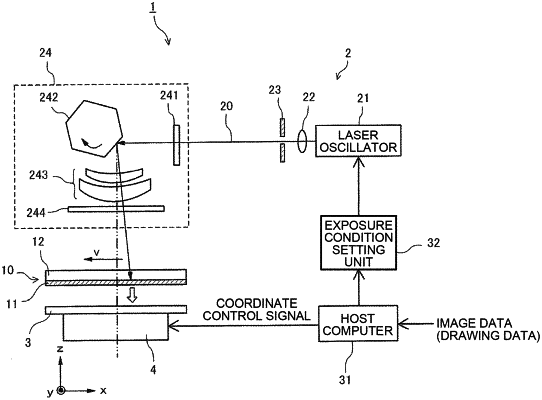| CPC G02B 26/124 (2013.01) [G01B 11/24 (2013.01); G02F 1/11 (2013.01); H01S 3/067 (2013.01)] | 16 Claims |

|
1. An apparatus configured to fly a light-absorbing material, comprising:
a unit configured to irradiate a light-absorbing material with a laser beam, a wavelength of the laser beam corresponding to a light absorption wavelength of the light-absorbing material to fly the light-absorbing material, the laser beam being a ring-shaped beam,
the light-absorbing material being a resin, metal, ceramic or liquid, and having a viscosity of 1 pascal-second or more,
the unit being configured to
irradiate the laser beam in rows along a scanning direction, and
create beam radiation regions including a preceding beam radiation region and a following beam radiation region, based on the preceding beam radiation region and the following beam radiation region overlapping, the unit is configured to irradiate the following beam radiation region with the laser beam such that a beam centroid position is outside the preceding beam radiation region, a beam centroid position of the beam radiation regions in the second row do not overlap in a direction perpendicular to the scanning direction with a beam centroid position of adjacent beam radiation regions in the first row.
|